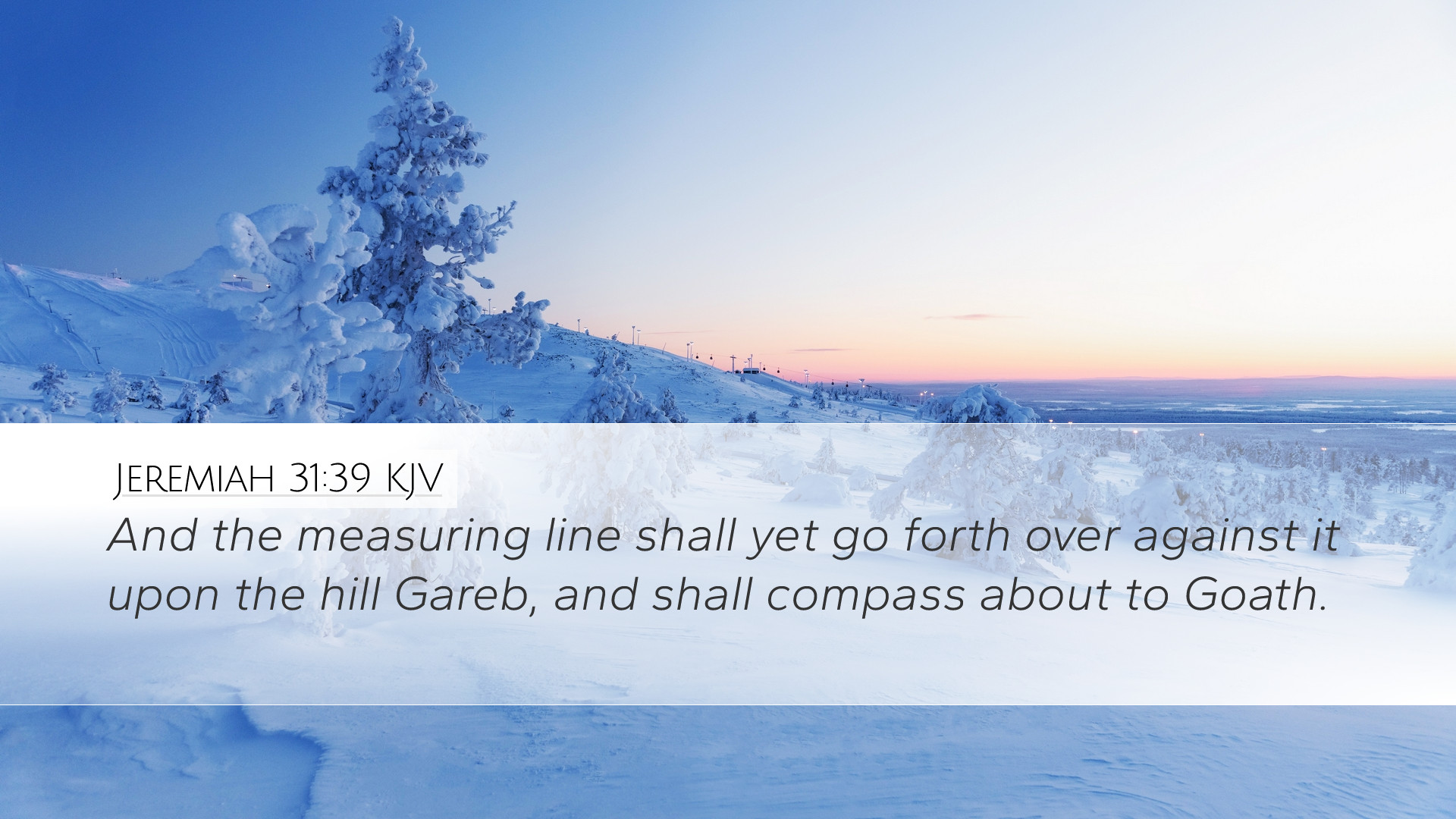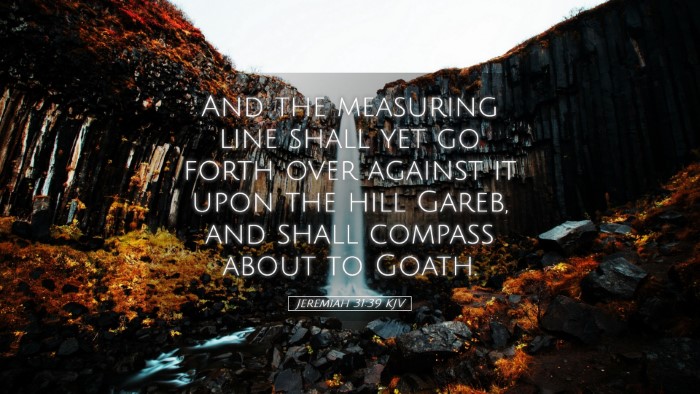Commentary on Jeremiah 31:39
Verse Overview: Jeremiah 31:39 states, "And the measuring line shall yet go forth over against it upon the hill Gareb, and shall compass about to Goath." This verse is a part of a larger prophetic context where God promises restoration to His people following judgment.
Introduction
This verse is rich in imagery and carries profound theological implications regarding God's covenant with His people. It speaks not only of physical restoration but also of a spiritual renewal that underlies God's faithfulness to His promises.
Historical Context
Jeremiah was a prophet during a time of national crisis for Judah. The Babylonian exile had a profound impact on his ministry. This particular passage is situated in a portion of scripture that promises a new covenant and restoration after the destruction wrought by foreign powers.
Commentary Highlights
Matthew Henry’s Perspective
According to Matthew Henry, the measuring line represents God's meticulous care in restoring the land and ensuring that it is built back according to His divine order. The specific mention of Gareb signifies the importance of precise boundaries determined by God. This restoration is not casual; it is a careful reestablishment of what has been lost.
- Divine Measurement: The measuring line symbolizes God's governance over creation and His assurance to His people that they will again possess their land.
- Significance of Places: The hills and locations mentioned (Gareb and Goath) could suggest areas that were significant in Israel's history, emphasizing the return to a rightful inheritance.
Albert Barnes’ Interpretation
Albert Barnes emphasizes the prophetic nature of this verse. He notes that "the measuring line" indicates God's architectural plan for His people. The restoration is likened to the rebuilding of a city—Jerusalem—where the boundaries are extended, signifying peace and divine presence returning to the people.
- Expansion of God's Promise: The mention of measuring signifies that God will reclaim and redefine His people’s territory, establishing a new era of blessing.
- Symbol of Hope: For Barnes, the act of measuring can also be viewed as a reassurance that God’s plans are always unfolding, regardless of current seemingly despairing circumstances.
Adam Clarke’s Analysis
Adam Clarke provides further insight into the geographical elements of this verse. He identifies Gareb and Goath as notable locations that encapsulate the full length of God’s promise to restore His presence to His people and their land. Clarke suggests that these locations can be seen as representative of the broader landscape of hope and future promise for Israel.
- Jerusalem's Restoration: Clarke argues that the restoration mentioned extends to Jerusalem, which is central in the theology of hope and redemption.
- Messianic Implications: The measuring line also hints at Christ’s future reign, where boundaries are indicative of fullness and completeness under His governance.
Theological Implications
Theologically, this verse challenges readers to understand God's nature as a restorer and a builder. His desire is not merely for a physical land but for a spiritual renewal that encompasses His entire covenant community.
This verse thus serves as a reminder that regardless of past failures, God’s commitment to His promises remains steadfast. The imagery of measurement rebukes the thought of chaos and disorder, offering a vision of harmony as God re-establishes His people.
Practical Applications
For pastors and theologians, Jeremiah 31:39 can serve as a basis for sermons or teachings on restoration, both personal and communal. The assurance that God measures and defines our lives provides comfort in times of uncertainty. It highlights the importance of hope in God’s plans, especially when one feels lost or displaced.
- Encouragement: Remind congregations that restoration is often a process that involves God’s active engagement in their lives.
- Community Reflection: Reflect on how church leadership can identify and engage in the process of restoring relationships, property, and trust within the community.
- Timelessness of God’s Promises: Emphasize that God’s promises transcend generations, urging believers to trust in God’s overarching plan for their lives.


